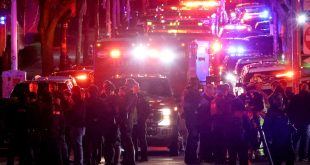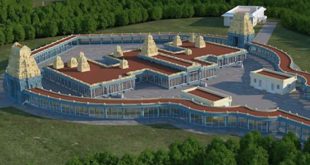A new museum in Williamsburg, VA, is shedding light on the complicated history of slavery in America. The Williamsburg Bray School is believed to be the oldest known schoolhouse for enslaved children. It became one of several schools set up across the colonies by the Bray Associates, a missionary arm of the Anglican church.
Students were taught to read so they could practice the faith of the Church of England, also known as Anglicanism, Virginia’s official religion at the time.
“We know that they had books made and shipped here to the Williamsburg Bray School,” Jennifer Wilkoski, director of Architectural Preservation and Research for Colonial Williamsburg, told CBN News. “It was basically a primer, a little spelling and reading, but they also were reading the gospel too. So, they were expected to go to church every Sunday. They were also, especially the girls, were learning how to sew.”
***Please sign up for CBN Newsletters and download the CBN News app to ensure you receive the latest news from a distinctly Christian perspective.***
Researchers from William & Mary put together pieces of the puzzle that led to the recent groundbreaking archaeological discovery of the school.
“Terry Myers, who was a professor at the College of William & Mary, he started to really research the enslaved students and enslaved workers from the college and kind of tied everything together,” Wilkoski explained. “So, he’s the one who recognized this building, and then we as architectural historians, we came through in 2020 and we did a study called Dendrochronology, and that’s where we did tree ring dating of the building. And you can actually take samples of the timbers and get a very specific date. So that’s where we learned that the building was built in 1760.”
The school taught free and enslaved Black students from 1760 to 1774. While students learned to read, they were also taught to accept their place as slaves; all within the framework of Christianity.”
“While it sounds like it is a generous thing, they also reinforced the tenets of slavery when it came to their curriculum,” said Wilkoski.

“They had to walk a tightrope of pushing how important it was to educate these people because they’re going to have all these skills – at the end of the day they’re going to be docile, they’re going to be good Christians. They’re going to follow your rules,” said Dr. Cassandra Newby-Alexander, professor of history at Norfolk State University. “Inculcate them with the idea that whatever their status is, it was given to them by God and to challenge that status was to challenge God.”
Genealogist Elizabeth Drembus is leading efforts to identify students of the school and find their descendants.
“What we know of the students comes from three attendance lists or rosters, and that’s how we know the names of 87 children who attended the school,” Drembus said. “We do a little bit of traditional genealogy and oral history where we are talking with people who have ties to the Williamsburg area because of their ancestry.”
Such ancestry links Janice Canaday to Elisha and Mary Jones, who attended the school as free black students in 1762. Canaday told CBN News that knowing her family’s history has helped empower her life.
“I self-identify in a more positive way,” Canaday said. “It’s heightened my self-esteem. It’s helped me to raise my children to know who they are and to realize their power and the power of their presence.”
Canaday, who is also a manager of African American Community Engagement for the Colonial Williamsburg Foundation, admits that knowing how and why the school educated her ancestors is complicated.
“When we say school, we’re thinking about education, and there is education going on here, but there’s also an intention as to teaching these children how to be better servants or slaves to their enslavers or their owners. These children were able to flip that indoctrination,” Canaday commented. “They’re not teaching them how to think, but teaching them what to think. And so they changed that.”
Newby-Alexander pointed out that many of the students from the Bray School went on to join First Baptist Church Williamsburg, one of the oldest black churches in the country.
She believes that connection helped lead to the students’ success with many becoming teachers.
“I see the Bray School as an indicator of how when you open the door, while you may have a different intent and purpose, people take part of that and embrace it, and it becomes a powerful force in your own agency,” said Newby-Alexander.
It is an issue that Canaday sees going beyond just a learning experience.
“It’s just an igniter and an opening to a more relevant, deeper conversations about who we are as a people, how we stepped around and navigated oppression and restrictive laws and conditions that didn’t allow us to embrace our humanity and didn’t force other folks to see our humanity,” she said. “So, I want this to help us find our genius and to walk in our genius.”
Meanwhile, Newby-Alexander hopes the new Bray School museum helps to foster healing for many blacks and the nation as a whole.
“I’m glad now that Colonial Williamsburg has recognized the importance of bringing that history that has been invisible in the past, bringing it to the forefront now, and making it a part of a narrative that we all need to embrace as a society and culture because to lie about your past is to deny your future,” Newby-Alexander said.
Source link




